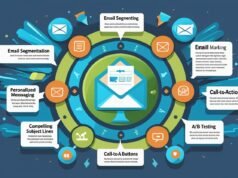Introduction:
In the ever-evolving world of custom software development services, staying ahead of bugs, performance issues, and security threats is a relentless pursuit. Enter Digital Twins — a cutting-edge concept originally from industrial IoT that’s now reshaping how Quality Assurance Testers approach software testing and simulation.
A digital twin is a real-time, virtual replica of a physical object, process, or system. But in software, this concept extends into creating high-fidelity simulations of applications, user environments, and performance behaviors. For QA teams, that means faster, smarter, and more predictive testing.
What Is a Digital Twin in Software Testing?
In software QA, a digital twin refers to a virtual model of an application or system environment, allowing testers to simulate real-world user behavior, stress conditions, and potential system failures without impacting the actual system.
Unlike traditional test environments that only mimic basic functionalities, digital twins:
- Mirror the entire system state and dynamics.
- React in real-time to changes.
- Collect telemetry and feedback to improve future tests.
Why Digital Twins Matter in Custom Software Development
In custom software development, every solution is unique, which makes generic testing inefficient. Digital twins allow tailored simulations for each client environment, leading to more accurate testing outcomes.
Benefits include:
- Real-world simulation: Mimic how users interact with the software.
- Performance testing: See how your software handles scale, latency, or load before production.
- Continuous monitoring: QA teams can track issues over time, not just in isolated test cases.
- Faster release cycles: Spot and fix bugs earlier in the SDLC (Software Development Life Cycle).
How Quality Assurance Testers Use Digital Twins
For a Quality Assurance Tester, digital twins act as powerful tools that go beyond static scripts. Here’s how they’re used:
1. Environment Simulation
QA testers use digital twins to simulate operating systems, devices, APIs, databases, and user settings, helping them validate software behavior across various platforms.
2. Predictive Testing
Digital twins analyze system logs and performance history to predict future failures. QA testers can then create test cases based on potential failure points.
3. Real-time Feedback Loops
During testing, digital twins feed real-time telemetry back to the QA team, allowing for dynamic testing where the test cases evolve based on software behavior.
4. Continuous Integration (CI) and Delivery (CD) Support
They integrate seamlessly with CI/CD pipelines to provide real-time feedback during automated deployments.
Use Case: Simulating Healthcare App Behavior
Let’s say a company offers custom software development services for healthcare applications. Using digital twins, the QA team can:
- Simulate hospital environments.
- Monitor how data flows from IoT health devices.
- Predict downtime or lag during peak usage.
- Test HIPAA-compliant data encryption models under load.
This improves both performance and regulatory compliance — critical in sensitive sectors.
Challenges and Considerations
While promising, digital twins in QA testing aren’t without hurdles:
- Data Overhead: Real-time simulations generate large amounts of data.
- Cost: Building and maintaining digital twins can be resource-intensive.
- Expertise: Requires both development and domain-specific knowledge.
Still, for companies serious about quality, these are investments that offer high ROI over time.
The Future of QA: AI + Digital Twins
The integration of AI with digital twins is the next frontier. Imagine a Quality Assurance Tester using an AI-powered digital twin that:
- Auto-generates test cases based on code changes.
- Learns from past bugs to prevent future ones.
- Simulates millions of user sessions simultaneously.
That’s not sci-fi — it’s the near future of custom software development services.
Conclusion:
Digital twins are reshaping how we test, simulate, and ensure quality in software. For Quality Assurance Testers and businesses offering custom software development services, this means:
- Reduced risk
- Smarter testing
- Faster delivery
- Higher client satisfaction
As digital experiences become more complex, relying on traditional QA won’t be enough. Embrace digital twins to future-proof your software quality process today.







